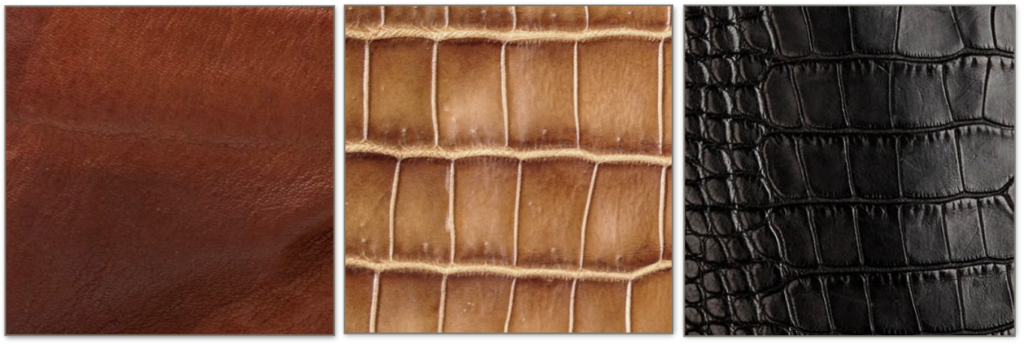There are many types of leather jackets, leather bags, and other leather accessories but in between the only question comes to our mind, leather’s quality, which leather type should we buy. so here is your solution, we will discuss the types of leather-

The two big ones you’ll most often run into are cow leather and lambskin. Cow used to be the king, but you’ll find that lambskin is more common now because it’s extremely soft.
The downside to lambskin though is that it’s generally more expensive because the size of the raw skins is smaller than a cow, meaning designers have to buy more to make one jacket.
My personal favorite variety is calfskin, basically a young cow. It has the properties of both cow and lamb – it’s as soft as lamb but durable like a cow.
The downside is that calfskin is much more expensive than even lamb, because of a full-grown cow yields more skin (and meat) than a calf, so it’s more economically worth it for the farmer to raise the cow to maturity.
Here’s a rundown of other leather types you’ll encounter, and what to expect:
Suede: To make suede, the top portion of leather is separated from the bottom, rougher layer, known as the corium.
These are split further depending on their thickness, and then shaved and sanded smooth to give it its signature soft, fuzzy texture.
Suede

is typically made from goat or lamb. Lamb suede is softer than goat, but the goat is more durable.
The big downside of suede is that it absolutely cannot get wet, as it will dry & get extremely hard.
Luckily, there are a handful of suede protectors you can purchase to make your jacket water repellent without changing the softness.

Goat: Similar to lambskin, but not as smooth or buttery soft and has a tight pebbly texture.
Horse: Slightly stiffer than cow, extremely durable, generally smoother grain and high shine, needs a good amount of breaking in.
Deerskin/Elk: Extremely durable, traditionally yellow/orange tint leather, though they’re sometimes dyed black or brown.
Pig: Similar to the cow, very durable with some varying textures.
Bison: Tough, thick with a distinct large, deep grain pattern.

Kangaroo: Similar looking to cow leather, but thinner and much tougher. Fairly uncommon now, so brands tend to charge a premium for it.
Crocodile/Alligator: Very similar looking, with a large square and rectangular-shaped tile patterns. Crocodile skins will have visible hair follicles (small dots) on each tile, while alligators will not. Extremely expensive, with jackets often costing 20x+ cow or lambskin equivalents.
Full Grain Leather generally refers to leather that hasn’t been altered and retains the natural grain (skin pattern) of the animal.
These leathers are desirable because of the natural pores, which make it more breathable, along with the natural oils, which make the leather feel really soft.
The downside (to some) is that these leathers will have natural scuffs, scars, and blemishes from animals just being animals. They’re also thicker, which can make for some less comfortable jackets.
Top Grain Leather is leather that is split from the bottom layers. The bottom split layer (corium) is what they make suede out of. Splitting the top grain from the corium layer makes the leather thinner, creating more comfortable jackets.
Corrected Leather is leather that is sanded down to remove the imperfections, thus removing the original grain, then given a faux animal skin grain via mechanical pressing.
Corrected leathers are coated with topical treatments, oils, and dye, to make them more appealing. The result is an often uniform grain, super smooth leather that’s very “plastic” feeling.
rexin or plastic leather
The higher up you go the price chain, the less likely you’ll run into it.
You’ll mostly be dealing with slight differences in quality of full grain and top grain leather, which are sometimes hard to tell apart. At which point it’s really just a matter of your own preference on how the leather feels.
Feel the leather by scrunching and squeezing the sleeve it in your hand. Rub your fingers on it. Is it soft, grainy, a little oily feeling? It’s probably good leather. If it feels slick, smooth or “plastic,” you might have an over-treated and corrected leather.
never buy rexin leather. in my suggestion.


